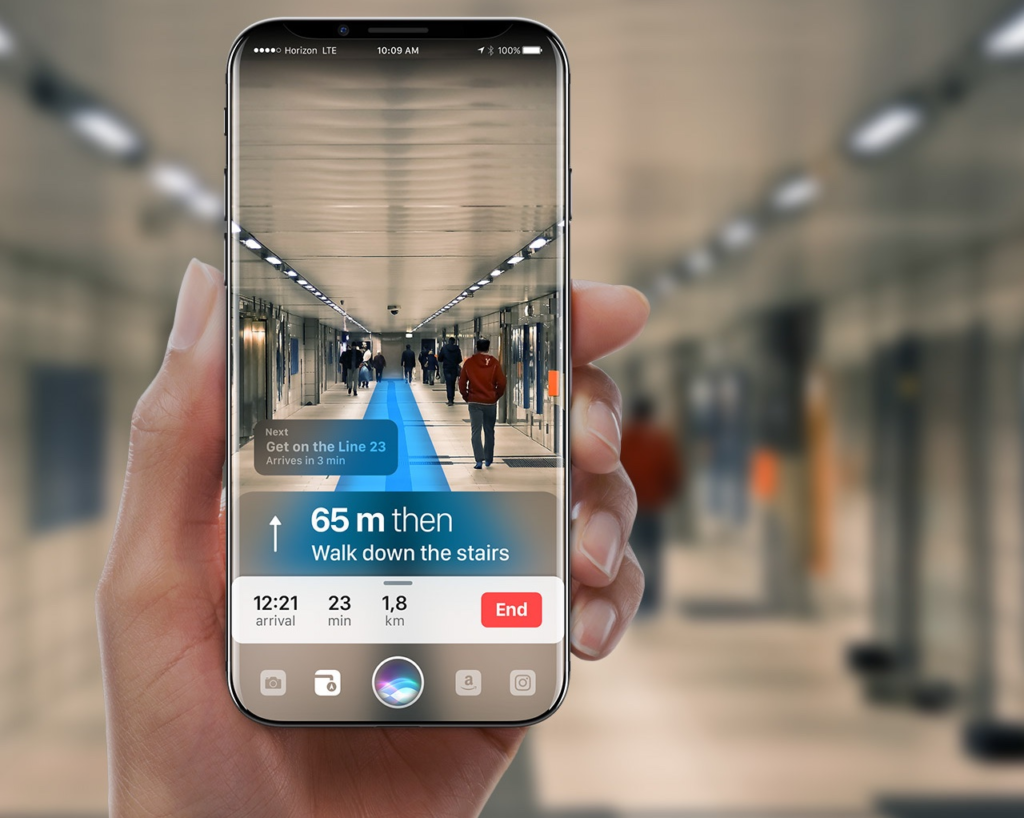Indoor navigation: The unstoppable march of technology
EPA System / News & Eventi

While outdoor navigation has been refined over the years, thanks to GPS and other technologies, indoor navigation has remained a challenge to overcome. However, recent innovations and technological developments are making indoor navigation increasingly precise and efficient.Indoor navigation refers to the ability to determine location and navigate within buildings, such as airports, shopping malls, and stores. It’s a field of research that’s continually evolving, with endless applications. From enhancing the shopping experience to simplifying navigation in airports, indoor navigation technology is changing the way we move indoors.
The importance of indoor navigation in today’s world
Indoor navigation is becoming increasingly important in today’s world, where we spend more and more time indoors. People are increasingly relying on technology to help them find their way indoors, avoiding getting lost or having to ask for directions. This technology is particularly useful in airports, where time is often critical, and accuracy is crucial to reaching boarding gates on time.
Furthermore, indoor navigation can improve the shopping experience in malls and stores. Visitors can be guided directly to their desired destinations, avoiding the stress and hassle of searching for desired shops or products. This leads to greater customer satisfaction and can encourage impulse purchases.
Advancements in indoor navigation technology
Recent technological developments have made indoor navigation increasingly precise and efficient. One of the key technologies used for indoor navigation is Bluetooth Low Energy (BLE), which allows devices to communicate with each other over short distances. This technology enables devices to detect their own position within a building and provide precise directions to users.
Additionally, artificial intelligence (AI) is playing an increasingly important role in indoor navigation. AI algorithms can analyze data collected from sensors and devices to create accurate maps of indoor environments and provide precise directions to users.
Applications of indoor navigation in airports
Airports are one of the places where indoor navigation has a significant impact. Thanks to indoor navigation technology, passengers can be guided through the complex terminals of airports, avoiding confusion and wasting time. Interactive maps can display points of interest, such as shops, restaurants, and bathrooms, allowing passengers to plan their time more efficiently.
Furthermore, indoor navigation can be used to improve safety in airports. Passengers can be alerted in real-time to important information, such as changes in boarding gates or flight delays. This reduces passenger confusion and anxiety, ultimately improving the overall travel experience.
Improving the shopping experience with indoor navigation in malls and stores
Indoor navigation can also improve the shopping experience in malls and stores. Interactive maps can guide visitors directly to shops or products they desire, providing additional information such as promotions or special discounts. This not only simplifies navigation within malls but can also encourage impulse purchases, increasing sales.
Additionally, indoor navigation can be used to offer personalized experiences to customers. For example, a clothing store can use indoor navigation technology to suggest clothing items that customers may like based on their tastes and preferences. This makes the shopping experience more personalized and engaging.
Challenges and limitations of indoor navigation technology
Despite advancements in indoor navigation technology, there are still some challenges and limitations to overcome. For example, the accuracy of indoor navigation depends on the availability of wireless signals, such as Bluetooth or Wi-Fi. In densely crowded environments or areas with a lot of interference, accuracy can decrease, compromising the effectiveness of indoor navigation.
Additionally, creating accurate maps of indoor environments can be a complex and costly process. Detailed data about buildings, such as room dimensions and object layouts, needs to be collected to create precise indoor maps. This requires significant time and resources, making the implementation of indoor navigation a challenging endeavor.
Future trends and possibilities of indoor navigation
Indoor navigation is a rapidly evolving field, and there are many future trends and possibilities to consider. For example, augmented reality (AR) could be integrated into indoor navigation, allowing users to view overlaid directions on the real world through the use of glasses or mobile devices. This would make navigation even more intuitive and engaging.
Furthermore, integrating indoor navigation with other technologies, such as the Internet of Things (IoT) and home automation, could lead to new and exciting applications. For example, indoor navigation could be used to guide users through their homes, providing directions on how to reach a specific room or control home devices.
Implementing indoor navigation in your business or organization
If you’re interested in implementing indoor navigation in your business or organization, there are some things to consider. First, it’s important to assess your specific needs and goals. For example, do you need to improve indoor navigation for your customers or your employees? What are the areas or buildings where indoor navigation would be most useful?
Next, you should explore the various technological solutions available on the market. There are numerous vendors offering indoor navigation technologies, such as Bluetooth or Wi-Fi-based systems. It’s important to carefully evaluate the features and capabilities of each solution to ensure you choose the one that best fits your needs.
Providers and technological solutions for indoor navigation
There are several providers and technological solutions available for indoor navigation. Some of the leading providers include XYZ Company, ABC Inc., and DEF Solutions. These companies offer a wide range of products and services for indoor navigation, including hardware, software, and consulting services.
It’s important to carefully evaluate providers and their solutions to ensure you choose the one that best fits your needs. Also, consider the provider’s reputation in the industry and look for reviews and testimonials from other customers.Indoor navigation is constantly evolving and is revolutionizing how we move indoors. From optimizing the shopping experience in malls to efficient navigation in airports, indoor navigation technology offers a wide range of benefits. Despite current challenges and limitations, the future of indoor navigation is promising, with new trends and possibilities constantly emerging. If you’re looking to improve indoor navigation in your business or organization, consider implementing indoor navigation and carefully evaluate the various solutions available on the market.


